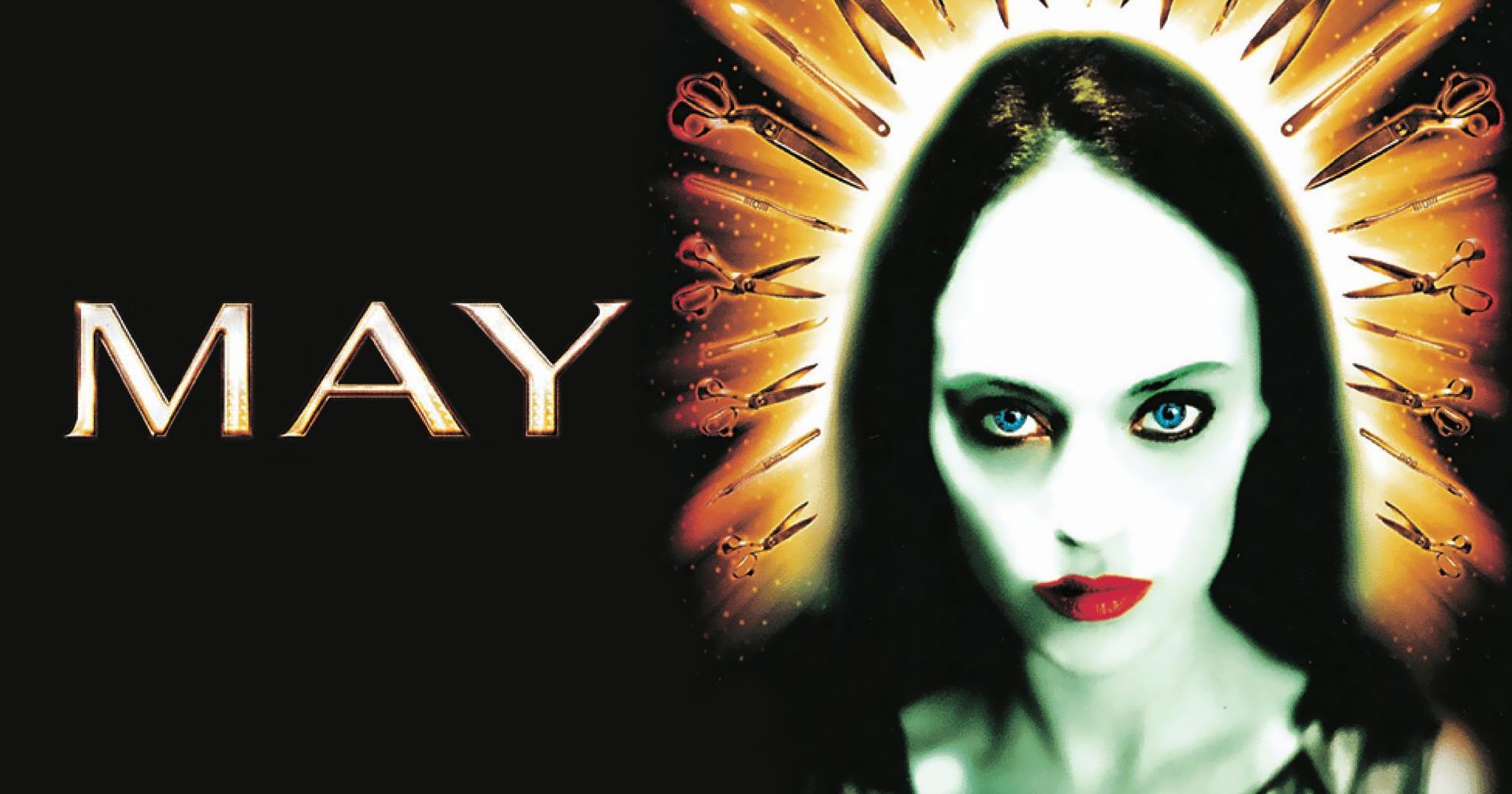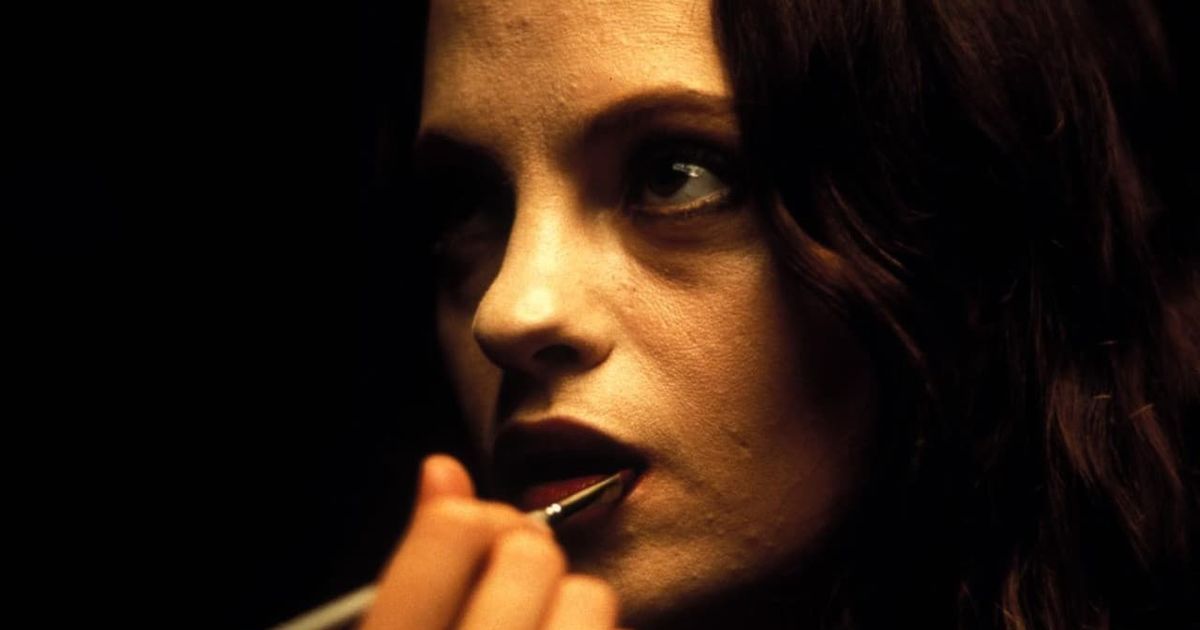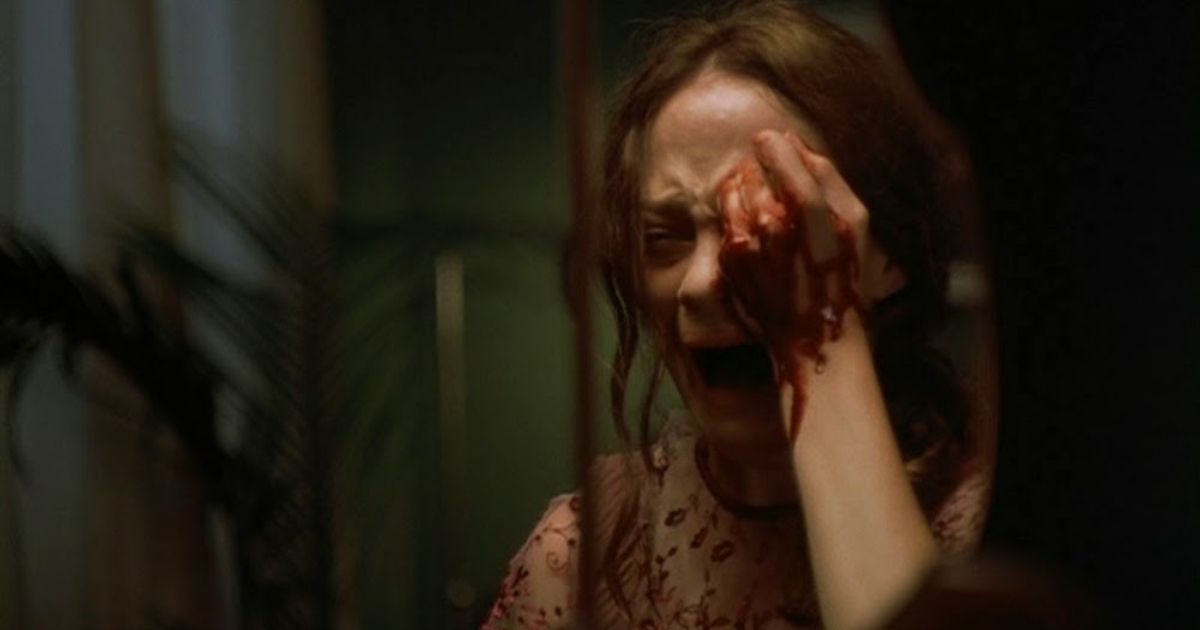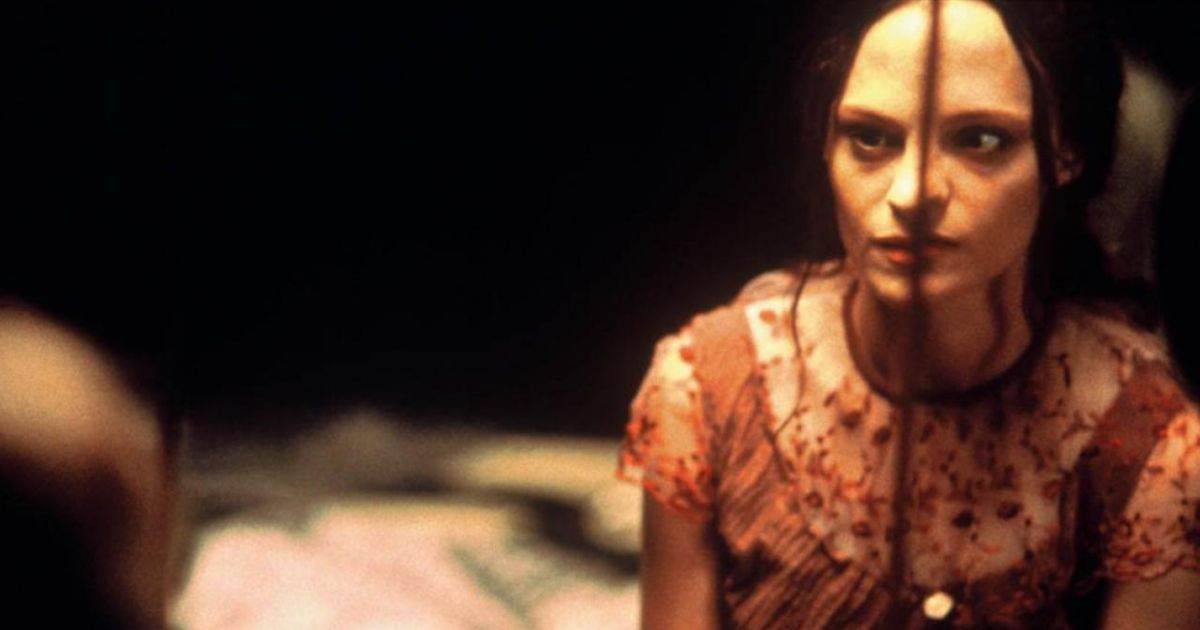While this 2002 psychological horror film might seem like it had some solid source material or a definitive model, May started simply as an idea. Director Lucky McKee, responsible for films like The Woman and The Woods, tells Horror News that May was just “something that popped into [his] head one day.” McKee says that his ideas “either grow to be a giant tree or eventually get sprayed with Round Up and removed. May became a giant oak.”
May presents the story of a lonely, young adult woman named May who struggles with her traumatic childhood made more difficult by her lazy eye. Her mother told her that if she couldn’t find a friend, she should make one, and so May keeps creepy handmade dolls with her. Despite this morbid advice, May tries to make friends and forms unstable relationships. She becomes disturbingly attracted to certain body parts of the friends that she makes, and ultimately begins a murder spree in order to assemble these body parts into a Frankenstein-like doll.
So, you’re probably asking, how could the gruesome body horror of May possibly have an underlying message other than that this woman needs help? The truth is that the film has a couple of layers to sort through and when you consider the project beyond the slasher violence, it is an incredibly successful horror movie. Back in 2003, Roger Ebert gave May his perfect four-star rating because the film presented a “fundamental sympathy for its monster.” Similar to Carrie, Ebert notes that May is about a woman who has been “wounded by society, and finds revenge.” Here is how May, the feminist Frankenstein movie, broke the internet.
The Film’s Feminist Message
The first detail to acknowledge is that the original story of Frankenstein, written by Mary Shelley, contains feminist messages, although male characters are portrayed as driving things forward. One of the females discussed in the original story is Dr. Frankenstein’s mother, who died and inspired Frankenstein to create something that would defy death and nature’s laws. In many ways, the mother is the impetus for the story.
The way that Frankenstein attempts to create something physical and perfect, turning against the natural flow of life, seems similar to the patriarchal expectations placed upon women then and now. May’s behavior reflects this as well. She senses that she is flawed (physically and mentally) and attempts to create something flawless through force and violence. Her flaws and strange fixation with body parts are a product of society’s idea of the perfect, doll-like woman.
That being said, although May is heavily impacted by society’s expectations, her bloody actions near the end of the film communicate self-governance. In Mary Shelley’s Frankenstein, another female character is Safie who has been, like the monster, exiled. According to Ayla O’Shea in her Medium article, Safie “completely disregards the customs of her culture to prioritize her own desires” much like May. Frankenstein’s monster, Safie, and May have exile in common' however, Safie is tolerated because of her beauty whereas the monster and May are shunned because of their physical appearance.
How May Broke Horror Boundaries
The film has found life beyond its quiet release in 2003. According to Keri O’Shay of Warped Perspective, at the time of May’s release, the internet “helped to promote the film: far from misrepresenting it as an almost-slasher, those more ready to attune to its message saw it as anything but that.”
Since then, interest in the film has grown, in part because it may have inspired other horror films exploring feminine agency, surgery, and perfection such as Jennifer's Body, American Mary, and Excision. As O’Shea notes, there is a continual “ocular trauma” theme in May that suggests the conflict between being seen and unseen. May appears to be both Dr. Frankenstein and the Monster, but in either case, fails to escape these roles.
Another part of why May has remained a topic of discussion is that although May is both Dr. Frankenstein and the Monster, she wants to be cared for, not worshiped. May’s struggle to be seen and showed compassion is an experience many people can relate to. Instead of being victim-oriented, Lucky McKee’s film gazes into the tortured history of its monster.
Angela Bettis and Lucky McKee Make May
The vastly underrated Angela Bettis, who portrays May in the film, admitted to Ain’t It Cool News that the film was partially autobiographical and based on Lucky McKee’s experience with loneliness. Bettis says that “anybody who is human has got to know that feeling,” and that the audience will probably understand the film on this level.
After The Woods and The Woman, McKee went on to direct and remake his 2001 film All Cheerleaders Die, and more recently the 2019 film Kindred Spirits. Currently, McKee is now releasing Old Man starring Stephen Lang, which is a break from the director's focus on the feminine. Many of McKee's films take on a female perspective because, according to Horror DNA, McKee feels that women aren’t afraid to “dig into something” and are "more intuitive."
The filmmaker added, "I guess it's because of how I grew up, my dad was working so much it was mainly just me, my mum and sister. I know a lot of good women." Like Dr. Frankenstein, perhaps it started with McKee's mother, too. May is available for streaming on Amazon Prime.




